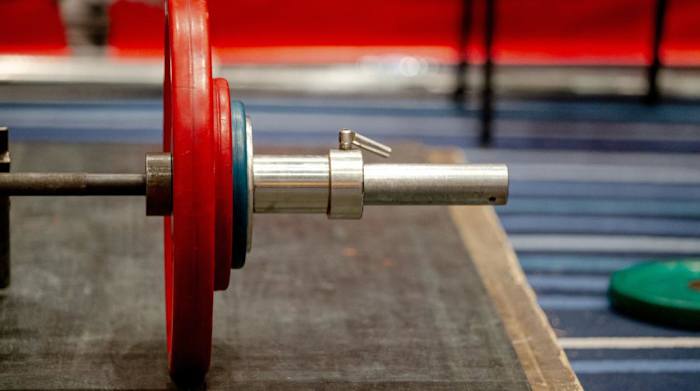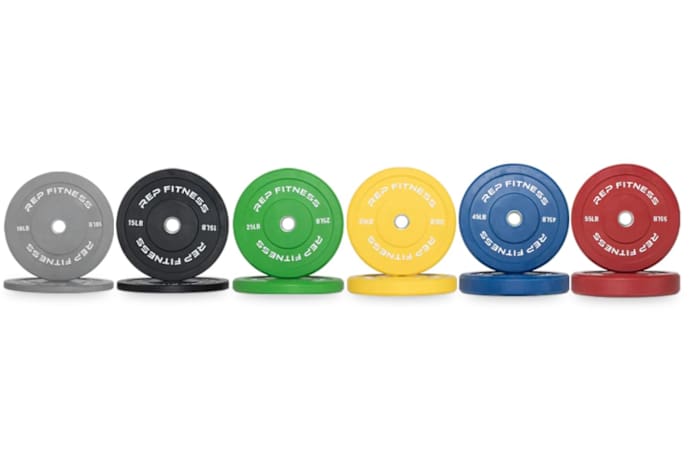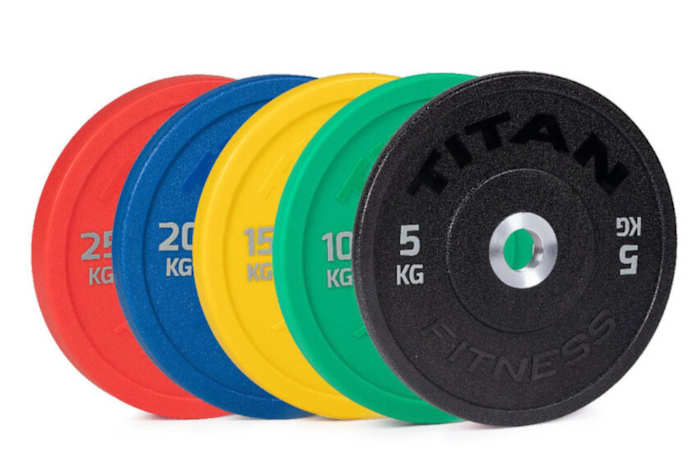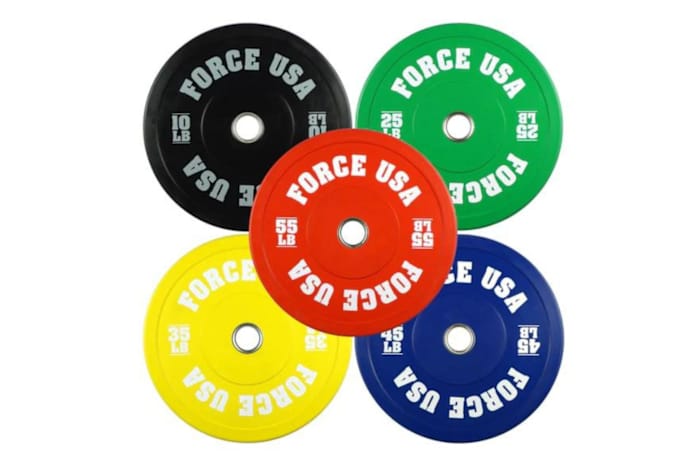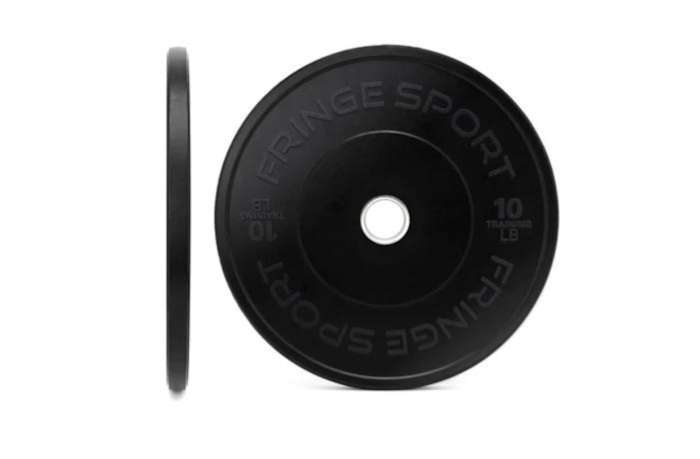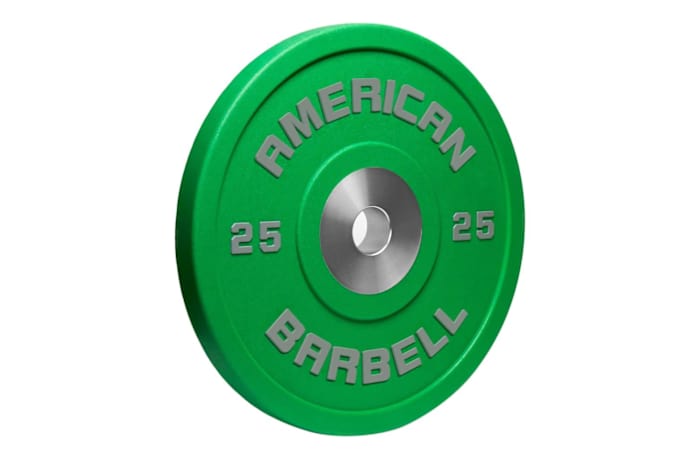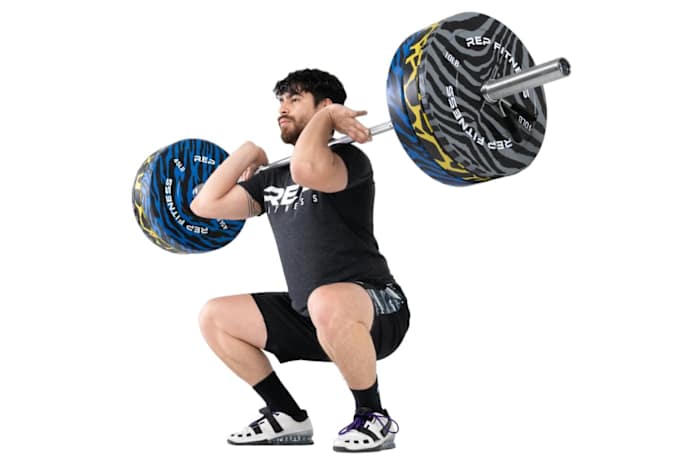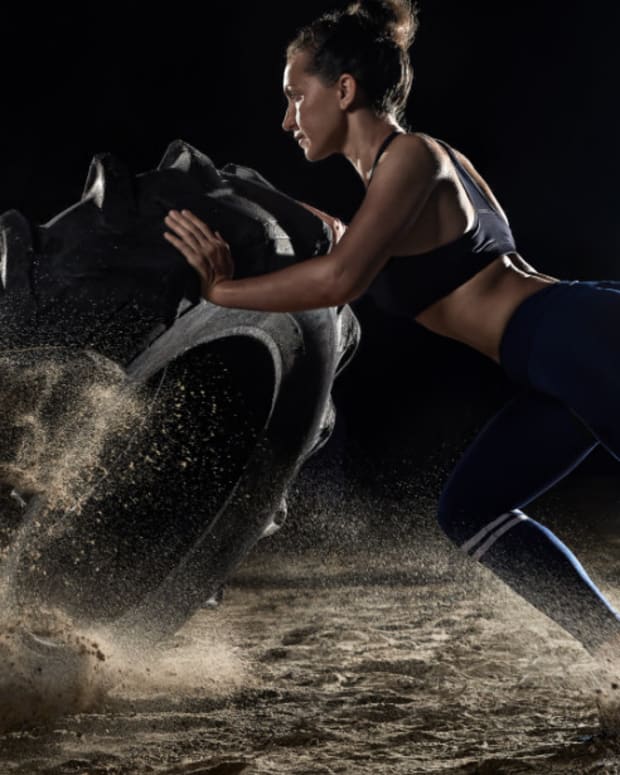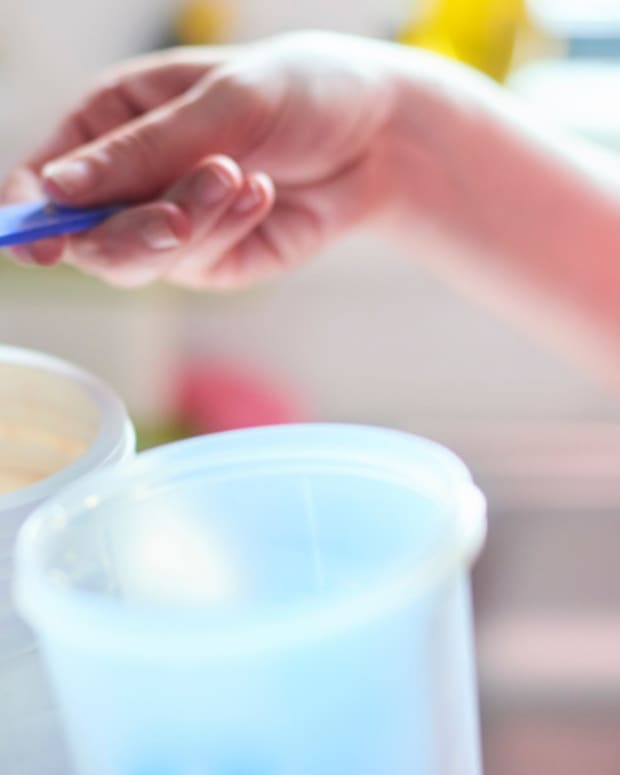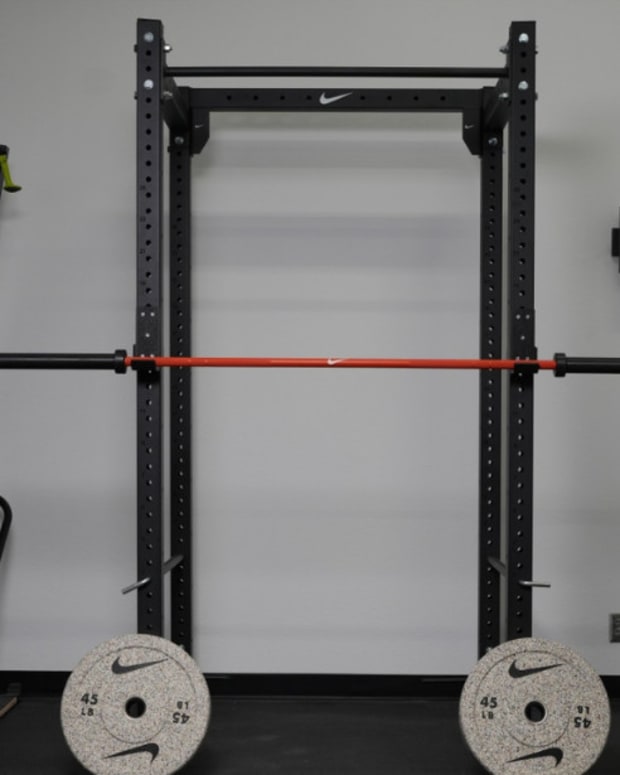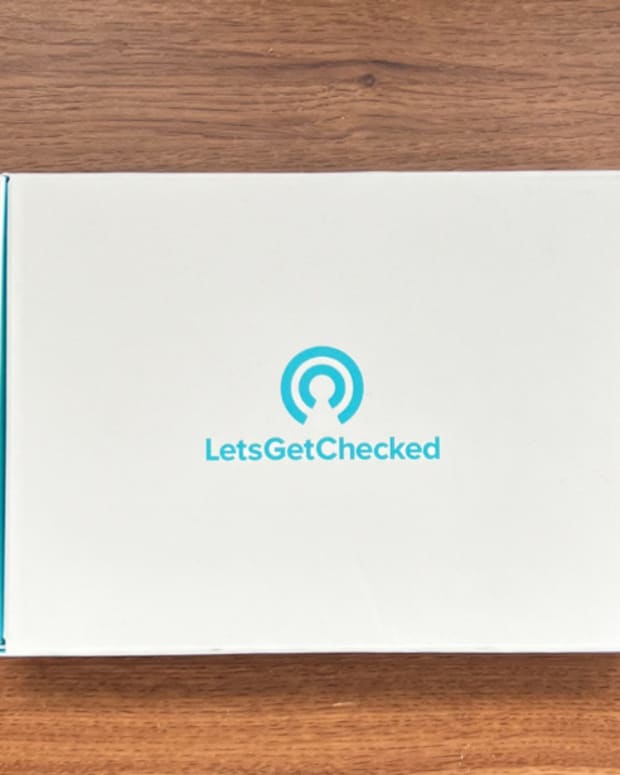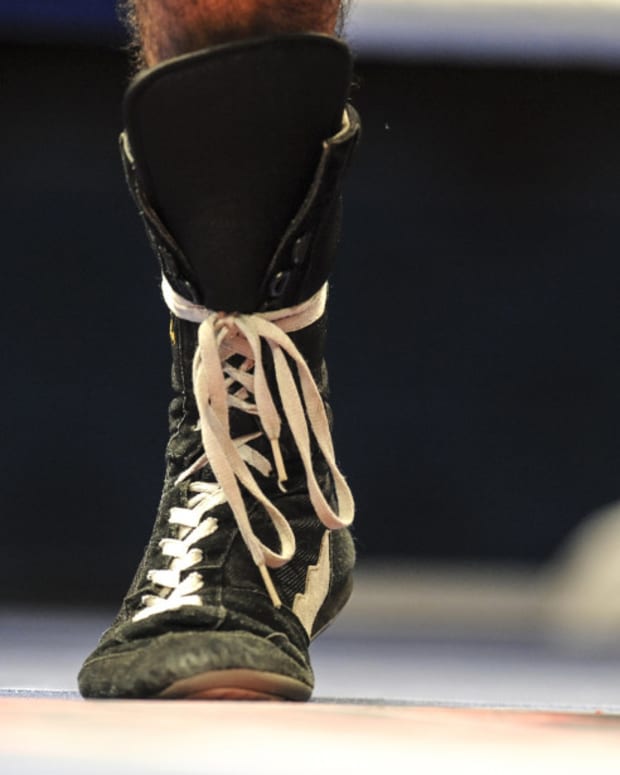The products featured in this article have been independently reviewed. When you buy something through the retail links on this page, we may earn commission at no cost to you, the reader. Sports Illustrated editorial staff are not involved in the creation of this content. Learn more here.
Bumper plates are a popular type of weight plate used in both commercial gyms and home gyms because they are durable, quiet, versatile, safer for flooring and visually attractive. Buying bumper plates is fairly straightforward, but it helps to consider what weights you need, how much money you’re willing to spend, what style of strength training you do and the material or type of bumper plates you are interested in.
In this article, we will discuss these and other important factors to consider when buying a set of bumper plates, the pros and cons of using them and our top picks for the best bumper plates on the market in 2024.
Our Picks for the Best Bumper Plates of 2024:
- Best Bumper Plates for Olympic Weightlifting: REP Fitness Color Bumper Plates
- Best Urethane Bumper Plates: Titan Fitness Urethane KG Bumper
- Best Bumper Plates for CrossFit: Force USA PRO Grade Bumper Plates
- Best Thin Bumper Plates: Fringe Sport Black Bumpers
- Best Rubber Bumper Plates: Synergee Black Bumper Plates
- Best Budget Bumper Plates: Rogue Echo Bumper Plates
- Most Durable Bumper Plates: American Barbell Pro Urethane Bumper Plates
- Best Color-Coded Bumper Plates: REP Fitness Animal Print Bumper Plates
Best Bumper Plates for Olympic Weightlifting: REP Fitness Color Bumper Plates
Specs:
- Price: $80-320 per pair, depending on weight
- Material: Rubber
- Weight options: Sold in pairs of 10, 25, 35, 45 and 55 pounds
- Collar opening: 50.4 millimeters
- Plate diameter: 17.7 inches
- Warranty: 10-pound plates are backed by a six-month warranty for both home and commercial use. The 25, 35, 45 and 55-pound plates are backed by a three-year warranty for home use and a one-year warranty for commercial use.
The REP Fitness Color Bumper Plates are solid bumpers ideal for Olympic lifting or training for other competitive powerlifting activities. They feature a convenient color-coding system to help you quickly and easily identify the weight that you are using. The bumpers are very well-made, and have a weighted steel center insert. The edges are raised to make it easier to pick up the plate and load it onto your bar.
Several features of these bumpers make them ideal for Olympic and competitive powerlifting. For example, the durometer rating of the rubber prevents them from bouncing when you drop them, even from overhead lifts like cleans and presses or when your Olympic barbell is loaded up with lots of weight for a heavy squat and you let go of the bar after maxing out.
They have even been factory-tested to withstand 12,000 drops from eight feet in the air, making them one of the toughest bumper plates on the market. We like that the 10-pound plates are constructed to be extra thick to prevent bending or warping over time, while the 45-pound and 55-pound plates are thinner than many competitors so that strong Olympic weightlifters can fit more plates on the bar without running out of loadable sleeve length. Given the thicknesses of the heaviest bumpers (3.2 inches for 55 pounds and 2.8 inches for 45 pounds), you can load up to 515 pounds onto a standard Olympic barbell.
Additionally, the bumper plates are all color-coded according to the International Weightlifting Federation standards, and the weight tolerance is just +/- one percent, so you know you are training with precise loads. These Olympic bumper plates are sold in pairs and are fairly affordable given the construction. With that said, they are not hi-temp bumpers. In fact, you are not supposed to mix them with hi-temp bumpers (doing so voids the warranty) because hi-temp bumper plates usually have a smaller diameter so if you drop the bar with a mix of the two types of bumper plates, the REP Fitness Bumper Plates will take all of the load and degrade faster.
Also, the durometer is not listed, but they are described to have less bounce, which probably puts the durometer rating above 80.
What we love:
- Color coded according to the International Weightlifting Federation standards
- Higher weight tolerance
- Steel weighted insert with standard collar opening diameter of 50.4 millimeters
- 10-pound plates are thicker to reduce bending
- Thinner plates to maximize potential load
What we don’t love:
- Warranty isn’t very good
- Durometer isn’t specified, but they are low bounce
Best Urethane Bumper Plates: Titan Fitness Urethane KG Bumper
Specs:
- Price: $80-175 per pair, depending on weight or $1,150 for the 150-kilogram bumper plate set
- Material: Urethane
- Weight options: Five, 10, 15, 20 and 25 kilograms sold in pairs or as an entire set of bumper plates totaling 150 kilograms
- Collar opening: 50.6 millimeters
- Warranty: One year
Urethane bumper plates are considered the premium or top-of-the-line bumpers because the material is extremely durable, attractive and odorless. However, they tend to be more expensive. The Titan Fitness Urethane KG Color Bumper Plates are not only high-quality urethane bumper plates, but they are also quite reasonably priced given the construction. These bumpers can be purchased in individual pairs in five-kilogram increments (10, 15, 20 and 25 kilograms) or you can buy a full set totaling 150 kilograms.
All of the plates have a 5.6 millimeter steel-lined center hole, so that they can fit onto Olympic barbells and most specialty bars. This steel sleeve insert is chrome plated to resist rust and increase the longevity of the bumpers.
The Titan Fitness Urethane KG Color Bumper Plates are competition plates designed to be durable, low-bounce and within +/- one percent of the stated weight, helping ensure that you are training with the right loads. The five-kilogram plate is 24 millimeters thick to reduce warping and the 25-kilogram plate is made as thin as possible (56 millimeters) to allow you to squeeze more plates onto your barbell. Overall, we also like that these bumpers are also super attractive because they are shiny and have vibrant colors that correspond with the standard color-coding regulations set forth by the IWF.
What we love:
- Very low weight tolerance (+/- one percent)
- Color coded and visually appealing
- Chrome Plate Steel Disc insert
- Five-kilogram plates are made thicker to resist bending
- Urethane construction is durable and odor free
What we don’t love:
- Sleeve diameter is slightly larger than International Weightlifting Federation standards
- Durometer isn’t listed
Best Bumper Plates for CrossFit: Force USA PRO Grade Bumper Plates
Specs:
- Price: $70-358 per pair, depending on weight, or sold in sets
- Material: Unspecified rubber
- Weight options: Sold in pairs of 10, 25, 35, 45 and 55 pounds
- Diameter: 17.71 inches
- Collar opening: 50.4 millimeters
- Warranty: One year
Our top pick for the best CrossFit training bumper plates are the Force USA PRO Grade Bumper Plates. These are high-quality, resilient and standardized bumpers that are both affordable and capable of standing up to heavy-duty use. Each Force USA Pro Grade Bumper Plate is designed in accordance with IWF standards, with a plate diameter of 450 millimeters across and the standardized insert diameter of 50.4 millimeters. They are also color-coded per the standard color designations. The finish is shiny and bright.
The Force USA PRO Grade Bumper Plates are made from high-density rubber for minimal bounce, even if you drop the bar from overhead. With a lip around the perimeter, they're easy to grab off of the bar, making loading and unloading a breeze.
These bumpers are durable enough to be used in commercial CrossFit gyms where they will get heavy use, but we also think they can be a great investment for CrossFit athletes looking to outfit a home gym with good weightlifting equipment at a reasonable price point.
What we love:
- Affordable
- Can be purchased in sets
- Color coded
- Standard collar opening diameter and plate diameter
What we don’t love:
- Durometer isn’t listed
- Specific material isn’t listed
Best Thin Bumper Plates: Fringe Sport Black Bumpers
Specs:
- Price: $82-269 per pair, depending on weight
- Material: Virgin rubber with stainless steel hub
- Weight options: Sold in pairs of 10, 25, 35, 45 and 55 pounds
- Collar opening: 50.4 mm
- Warranty: Three-year warranty on 25s, 35s, 45s and 55s; One-year warranty on 10s and 15s
Thin bumper plates have their benefits and drawbacks. The thinnest plates, such as those for 10-pound bumpers, are certainly more prone to bending and warping, but a thin bumper plate is ideal for heavier weights because it allows you to load more weight onto the barbell before maxing out the laudable sleeve length. Therefore, stronger powerlifters and Olympic lifters looking to do some heavy lifts can be well-served by the thinnest bumper plates available.
The Fringe Sport Black Bumpers are made with high-density rubber so that they can be thinner plates, allowing you to fit more weight onto the bar. Certain weights also come in colors if you prefer.
One of the additional benefits of the Fringe Sport Bumpers is that the insert is not only rust-proof stainless steel, but it’s also “hooked,“ which makes it stay securely seated inside the bumper plate. The bumper itself is made from virgin rubber that has an attractive finish and smooth texture. We like that, when compared to many of the best bumper plates, these bumpers are designed with a higher durometer, making them very low bounce or nearly dead bounce. They're also built to resist indentations even after dropping them time and time again. The 10- and 15-pound bumper plates have a durometer rating of 90, while the 25, 35, 45- and 55-pound bumpers have a durometer rating of 85.
Ultimately, the higher durometer of the lighter plates leads to less bounce. It also helps ensure that they are more resistant to bending because they are thin, yet they are still flexible enough that they are not brittle. The density of these bumpers makes them very stable, even at the lighter weights.
Another benefit to buying the Fringe Sport Black Bumpers is that they come in more available weights, particularly at the lower weight range, and you can also purchase them in sets to save money. All of the bumpers feature standardized sleeve insert diameters of 50.4 millimeters and the standardized plate diameter. Plus, they are said to have a weight tolerance of +/- one percent of the declared weight, so you can be accurate with your workouts. One final perk is that the Fringe Sport bumper plates are backed by not just the one-year warranty, but also a no-questions-asked satisfaction guarantee, allowing you to return them if they don’t meet your expectations or needs.
What we love:
- Thinner and denser than most bumpers
- Durable and less bounce than many bumpers
- Backed by a satisfaction guarantee
- Great weight tolerance +/- one percent of declared weight
- Standard collar sleeve diameter
- Stainless steel hub
What we don’t love:
- All-black plate rather than color coded
- Durometer isn’t listed, but said to be “low bounce plates”
- According to reviewers, they can be greasy and smelly upon arrival
Best Rubber Bumper Plates: Synergee Black Bumper Plates
Specs:
- Price: $80-320 per pair, depending on weight, or sold in a set
- Material: Rubber polymer
- Weight options: Sold in pairs of 10, 15, 25, 35, 45 and 55 pounds
- Collar opening: Two inches (50.8 millimeters)
- Warranty: 90 days for 10 pounds and 15 pounds, one year for heavier bumpers
If you like the look of black bumper plates, the Synergee Black Bumper Plates are a high-end, affordable option. They are low-bounce bumper weight plates built to withstand countless drops with minimal wear and tear. You can purchase them either in parts or in sets of different weights for a more economical purchase.
The Synergee Black Bumper Plates feature a fairly thin profile due to the density of the rubber polymer, enabling you to fit five 45-pound plates and two 15-pound plates on a standard Olympic barbell sleeve, for a total weight of 510 pounds. There is one thing to note, however, which is the collar sleeve diameter is slightly wider at two inches. This allows the plates to still fit on any standard barbell and most specialty bars, but if you have a bar with a particularly thin sleeve, you might need to use collars to keep these bumpers in place. If the bumpers have too much wiggle room, they may not stay perfectly vertical as you lift, which can put added stress on the tilted edges when they are dropped. Because all of the bumpers are black, regardless as to the weight of the plate, you have to look at the side of the bumper to see how much it weighs, but the numbering and raised lettering visually pops because it’s white and legible even from a distance. Finally, we appreciate that the Synergee Black Bumper Plates are a carbon-neutral product, making them more sustainable and environmentally friendly.
What we love:
- More weight options
- Carbon neutral
- Available in colors or black
- Sold in pairs or sets for a lower cost
- Free returns if not satisfied
What we don’t love:
- Larger collar sleeve opening may require bumpers
- Short warranty for light plates
Best Budget-Friendly Bumper Plates: Rogue Echo Bumper Plates
Specs:
- Price: $64-190 each, depending on weight; packages also available
- Material: Crumb rubber
- Weight options: Sold in pairs of 10, 15, 25, 35 and 45 pounds
- Collar opening: 50.6 millimeters
- Diameter: 17.71 inches
- Warranty: One year
Bumper plates are typically more expensive than regular iron weight plates, but you can get some decent budget-friendly bumper weight plates if you are willing to shop around. Our pick for the best budget bumper plates are the Rogue Fitness Echo Bumper Plates V2. You can purchase them individually or in pairs, which gives you some flexibility on how you allocate your funds when you are building out your home gym.
The Rogue Echo Bumper Plates have an IWF-standard 450-millimeter diameter (17.71 inches) and a weight tolerance said to be within one percent of the stated weight target. They have high-quality, anti-corrosion stainless steel inserts and are crafted from high-end virgin rubber. Despite the relatively affordable price tag, these bumpers are not cheaply made. With a durometer rating of 88, these bumpers should resist indentations when dropped and have little to no bounce when dropped.
These Rogue Fitness bumper plates are also particularly thin. For example, the 10-pound bumpers are just 0.83 inches thick and the 45-pound bumpers are 2.4 inches thick, allowing you to load more weight onto the bar.
One final benefit that we really like is that the Rogue Echo V2 Bumpers are officially approved for use with the new United States Army’s Combat Fitness Test, which includes a strength deadlift and standing power throw, among other tests. Rogue Fitness has a good reputation for producing high-quality strength training equipment, and these bumper plates seem to fall in line with that trend.
What we love:
- Can be purchased individually or in pairs or bumper plate sets
- High durometer rating makes them durable and low bounce
- Approved for the new Army Combat Fitness Test (ACFT)
- Stainless steel inserts
What we don’t love:
- No 55-pound plates
- All black
- Strong odor out of the box
Most Durable Bumper Plates: American Barbell Pro Urethane Bumper Plates
Specs:
- Price: $352-550 per pair, depending on weight
- Material: Urethane
- Weight options: Sold in pairs of 25, 35, 45 and 55 pounds
- Collar opening: 50.4 millimeters
- Diameter: 17.71 inches
- Warranty: Three years
Urethane is considered to be the gold standard material for maximizing the durability of bumper plates. American Barbell is actually the first company that manufactured a urethane bumper plate, so the products have set the standard for other urethane plates. Made from premium German urethane, the American Barbell Pro Urethane Bumper Plates are exceptionally durable, vibrant, shiny and minimal bounce. These are certainly striking bumpers, with all of the raised letterings and markings on them color molded into the plate for long-lasting, visually-appealing aesthetics.
The internal chrome hub is super durable and made from a solid one-piece construction for maximum durability and rust resistance. They have a standard collar sleeve diameter of 50.4 millimeters. The durometer rating of the urethane is over 90, which means that this is a very incompressible material that will not dent nor bounce when dropped.
In addition to being more expensive, one downside that we don’t love is that the American Barbell Pro Urethane Bumpers don’t come in lighter weights; the lowest weight option is 25 pounds.
What we love:
- Premium urethane lifting bumper plates
- Great warranty
- Color coded
- Hard chrome insert
- Shiny and attractive
What we don’t love:
- Expensive
- No lighter weights
- Smooth insert makes it loud to load plates
Best Color-Coded Bumper Plates: REP Fitness Animal Print Bumper Plates
Specs:
- Price: $89.99–$309.99 per pair, depending on weight
- Material: Rubber
- Weight options: Sold in pairs of 10, 25, 35, 45 and 55 pounds
- Collar opening: 50.4 millimeters
- Plate diameter: 17.7 inches
- Warranty: 10-pound plates are backed by a six-month warranty for both home and commercial use. The 25, 35, 45 and 55-pound plates are backed by a three-year warranty for home use and a one-year warranty for commercial use. However, this warranty is void if the plates are used with Hi-Temp style plates. According to the brand, “Hi-Temps have a smaller diameter than regular plates, which means a bar loaded with a mix of REP's bumper plates and Hi-Temps will result in the bumper plates taking all of the load, causing them to degrade faster.”
If you’re looking for a solid set of lifting bumper plates with more personality than plain black ones, look no further than REP Fitness’s Animal Print Bumper Plates. These bumpers are decorated with bright, animal-inspired prints to zhuzh up any boring home gym. The colors in the patterns correspond with the standard color coding for bumper plates; plus, the patterns are molded into the bumper during construction, so there’s no risk of the color rubbing off.
Outside of the aesthetic, the plates are also solidly constructed—we like that they use an two-inch opening, which will fit standard Olympic barbells. They have a hooked, zinc-plated steel insert for durability, and the ten-pound plates are thicker than others to avoid bending. We also like that all REP’s plates have a one-percent tolerance, meaning that they’re guaranteed to be within one percent of the weight stated on the side.
Reviewers have an overwhelmingly positive opinion, too—all 13 reviews on the brand’s site are five stars. “These Animal Print Bumper Plates have added the perfect “POP” of color to my home gym. Already planning my next purchase from REP!” writes Travis S. “They look amazing and the quality is great,” says verified reviewer Corey.
What we love:
- Fun animal print that won’t wear off with heavy use
- Standard two-inch collar opening
- One percent tolerance
- Ten-pound plates are thicker than normal to reduce bending
What we don’t love:
- Warranty could be better
What Is a Bumper Plate?
Bumper plates are weight plates made of tough rubber that have a metal insert in the center. Bumper plates usually have the same diameter and opening size as standard Olympic weight plates, so they can be used on barbells or specialty weightlifting bars like trap bars and safety squat bars instead of traditional iron or steel plates.
Bumper plates are often used during CrossFit or powerlifting workouts because they offer the same strength training benefits as iron weight plates but the rubber material means the barbell can be dropped on the floor without damaging the weight or the floor. Another benefit of bumper plates is that they are much quieter than lifting with cast iron plates because they don’t clang together, so you can train without making as much noise.
Benefits of Using Bumper Plates
Many people consider buying bumper plates when they are looking to equip their home or garage gym or upgrade their weightlifting equipment. There are several benefits of bumper plates, including the following:
Versatility
Compared to iron weight plates, lifting bumper plates are typically considered to be more versatile because they can be used for any style of weight training, including powerlifting, bodybuilding, Olympic lifting, CrossFit workouts or just general strength training for health. Although traditional iron plates are appropriate for some of these styles of training, they aren’t necessarily compatible with all styles of strength training because metal plates shouldn’t be dropped.
Bumper plates can also be used inside or outside, in commercial or home gyms, or even in garage gyms where there might be moisture.
Won’t damage the floor
One of the primary benefits of using a set of bumper plates instead of traditional Olympic plates is that the strong rubber material is durable enough to be dropped without getting damaged nor damaging the floor surface. They also don’t bounce when they are dropped. This makes bumper plates an excellent choice for home gym equipment.
Quiet
The rubber material of bumper plates makes them noise damping. Metal weight plates clang together and can be very noisy while training. This can be disruptive to others, especially if you’re trying to train at home when other people are sleeping or working, and can make for a less pleasant experience. Ultimately, bumper plates are quite quiet.
Durable
Although regular metal weight plates are fairly durable, they are prone to corrosion and rust. It’s also possible to chip cheaper weight plates. Bumper plates are constructed from very durable rubber with a high durometer, which means it’s a very tough material. Bumper plates are designed to withstand countless drops without being damaged or even really showing signs of cosmetic wear and tear. Although bumper plates also typically come with a decent warranty, their lifetime usually far exceeds whatever warranty they have, as long as they are made from good quality rubber or urethane.
Attractive
Although it might be less of a priority, bumper plates are aesthetically pleasing because they usually come in a variety of colors based on the weight that you use, or you can get certain patterns, all-black bumper plates and even ones with graphics. This allows you to really customize the look of your home gym and can make it more fun. If you buy color-coded bumper plates, you can also quickly and easily select the right weight based on the color and total your love by just visually assessing the plates.
Types of Bumper Plates
Crumb rubber
Crumb rubber bumper plates made from softer, recycled rubber. Because of this, they are typically less expensive but still quite durable. Depending on how they are treated, they can last between four years and twenty years.
Urethane
Urethane bumper plates are premium plates. What exactly does this mean? Well, they resist tear and wear compared to conventional rubber bumper plates. Urethane is also resistant to sunlight and weather conditions, so you can exercise outside without worrying about them getting damaged. They are shiny, low odor and extremely durable, but more expensive.
Competition
Competition bumper plates are designed for weightlifting competitions. They must meet certain standards set forth by the International Weightlifting Federation, such as certain color-coding rules, plate diameters, collar opening diameters and calibrated weights to decrease the weight tolerance.
Black vs. color
Some basic bumpers are all black with detailing on the side to indicate the weight of the plate. These have a certain aesthetic appeal, which can be a look that you might be going for. However, competition bumper plates and higher-end plates for Olympic-style powerlifting are often color coded based on the weight of the plate. Color-coded bumper plates have the advantage of not just being eye-catching, but also allowing for quick and easy identification of the weight of the plate in pounds or kilograms. You don’t have to flip the plate on the side to see the weight, or guess based on the thickness of the plate.
Competitions governed by the International Weightlifting Federation requires colored plates with a designated coding system as follows:
- Blue bumpers are two kilograms
- White bumpers are five kilograms
- Green bumpers are 10 kilograms
- Yellow bumpers are 15 kilograms
- Blue bumpers are 20 kilograms
- Red bumpers are 25 kilograms
What To Look for When Choosing Bumper Plates
Material
Bumper plates are usually made from some type of tough rubber. The most common materials are recycled or crumb rubber, new rubber (sometimes called virgin rubber plates) or urethane. The best material for bumper plates for your own home gym will depend on your training style, aesthetic preferences and budget.
Since crumb rubber bumper plates are recycled, they are cheaper than virgin rubber bumper plates, but reviewers complain that they smell and look dull and inconsistent in color. Urethane bumper plates are typically considered to be premium bumper plates because the material is extremely durable, can withstand weather conditions and has a nice appearance. However, urethane bumper plates are almost always more expensive than other rubber bumper plates.
Budget/price
There is a wide range of prices for bumper plates, depending not only on the quality of the plate but also on the weight. Lighter plates are less expensive, and the price goes up as the weight increases. Bumpers are usually sold in pairs, but you can find retailers that sell individual bumpers, and some of the bigger companies, like Eleiko, sell bumper plate sets or packages of bumpers with different weights in the set.
Keep in mind that budget-friendly bumper plates are usually made from cheaper materials and have higher weight tolerances. The sleeve inserts might be made from low-quality metals like aluminum and brass, which can warp after repeated droppings. Recycled rubber plates often have a bad smell. Bumper plates do tend to be a bit more expensive than standard cast-iron plates, but their versatility, durability, noise dampening effect and ability to be dropped without damaging the floors often make them a better investment for home gyms.
Weight tolerance
The weight tolerance of a bumper plate refers to how precise the labeled weight on the plate is to the actual measured weight of the bumper plate. The weight tolerance, or degree of flexibility or margin of error that you have around the weight of the bumper plate, you need will depend on how you plan to use them. If you are going to be doing weightlifting competitions, you will want calibrated bumper plates so that you have the most accurate and precise weight tolerances between any type of plate that you might use in training or in competition.
High-quality, calibrated bumper plates usually are within +/- one percent of their stated weight, whereas cheaper bumper plates and even most standard bumper plates will have a more permissive weight tolerance closer to +/- four percent or so. Having a bar lenient weight tolerance should not be a big deal if you are just doing your own strength training, bodybuilding or CrossFit workouts, but if you are training for competitions, every gram counts and it is important to spend a little more money and buy calibrated bumpers with a low weight tolerance.
Build and collar opening
The collar opening diameter on bumpers refers to the size of the hole in the center of the plate where the plate slides onto a barbell or specialty weightlifting bar. Standard Olympic bars have a sleeve diameter of approximately 1.96 inches so the bumpers you buy need to fit the sleeve well. Competition bumpers usually have a snugger fit on the bar, so they should have an opening around 50 millimeters, which is roughly 1.97 inches. This means you don’t need any collars on the bar. Standard bumper plates usually have a collar opening diameter that is not more than 50.8 millimeters, which is equivalent to two inches. If you are using a standard Olympic barbell, look for bumpers with collar opening around 50.4 millimeters, as this is the standard collar opening diameter per the International Weightlifting Federation.
Durometer
Reputable brands that manufacture bumper plates often report the durometer rating of the plates. The durometer rating refers to the relative hardness of the rubber material, ranging from zero to 100. The closer that number is to 100, the higher the durometer and the harder the plate. This means that the bumper is made from a higher-density, more resilient material, so it will be less likely to scratch or dent if dropped. For most recreational and competitive powerlifters, a durometer rating of 70 or above is sufficient.
Insert
Although bumpers themselves are made of some type of high temperature wrapper, they have inserts made from steel or some other metal. This steel insert is what lines the collar opening where the bumper slides onto the barbell.
The material from which the insert is made is important because it affects the longevity, durability and quality of the bumper plate. A gold standard is a stainless steel insert because cheaper metals are more likely to warp after being dropped many times. It’s also helpful if the insert has barbs on it rather than being just a smooth ring. Inserts with barbs grip into the bumper like tiny teeth, so are less likely to fall out over time and the inside of the collar might be textured to reduce noise as you slide the plate on the bar.
Usage
Bumper plates can be useful for any type of athlete, from the recreational person just looking to get stronger through strength training to CrossFit athletes, Olympic weightlifters, powerlifters, bodybuilders and other competitive weightlifters. Your intended usage may affect the best type of bumper plates to buy, namely in the fact that if you are planning to compete, it’s important to buy calibrated bumpers with a low weight tolerance and a standard collar sleeve diameter. If you do a lot of overhead lifts or drop the bar regularly, look for bumpers with a higher durometer rating so that they won’t bounce when you drop them.
Warranty
Most bumper plates come with a warranty of six months to two years, but as long as they are well made, they should significantly outlast the warranty. With that said, the warranty that comes with a bumper is usually indicative of how well constructed and durable the bumper is intended to be; a company isn’t going to back a low-quality bumper with a long warranty because they know it won’t last.
How to Use Bumper Plates
Bumper plates are an excellent choice for a wide variety of exercises, says Noam Tamir, NSCA-CSCS and founder and CEO of TS Fitness in New York City. “You can do snatches with them, almost like a clean to overhead press kind of motion. And those are very forgiving, because it's not like too much technique that's needed for you to flip it and then press it overhead, which I think is great,” Tamir says. “You can do a bent-over row with one plate by grabbing it by the sides. You can do overhead plate carries with it. You can do front squats. You can do rotational lunges. So I think it's a great tool for a lot of different exercises.”
As far as barbell exercises, “deadlifts and sumo deadlifts are probably the two most popular exercises for the general population that I would recommend bumper plates for,” Tamir says. “A sumo deadlift is going to be a wider stance than a standard deadlift—we give them a lot to people who have trouble getting into the deadlift position, which requires a lot of mobility in the hips, and stronger back and core muscles,” he says. With deadlifts, most people can lift quite a lot of weight. “You're really not going to control it on the way down, you're just gonna let it slam down. So the bumper plates will absorb a lot of that shock and impact. So in my opinion, you don't have to use as much strength to decelerate the weight when you are using bumper plates—you can just focus on the concentric part of the motion versus the eccentric.”
Bumper plates are also an excellent option for barbell lifts where the bar is held rather high above the ground, such as a front squat or overhead press. "They absorb the shock, so you run less risk of damaging the floor and the plates themselves when you drop the bar from that height," Tamir says.
Bumper plates are also a great choice for beginner lifters, who are ready to use the barbell but don’t have the strength for heavy plates. Since bumper plates are available in low weights but are the same diameter as regular plates, they can raise the barbell to a better position for many movements that require picking it up off the floor. “They're definitely great because they elevate the weight, so when you're lifting it off the ground, it's higher,” Tamir says.
Try the following movements to maximize your gains.
Standard deadlift
Stand in front of the barbell, with your feet about shoulder width apart and your shins nearly touching the metal. Bend your knees and send your hips back, keeping your shins vertical, core tight and back flat, until you can reach the bar. In this bottom position, your shoulder height should be higher than your hip height, which should be higher than your knee height. Grab the bar with your hands slightly wider than shoulder width apart, with one palm facing forward and one palm facing backward. Push through your heels and stand up straight, keeping a flat back back and engaged core throughout the movement. Keep the bar close to your shins as you lift up. Bring your hips forward, squeezing your core and glutes at the top of the movement. Lower the bar back to the ground, keeping your back flat, to return to starting position.
Sumo deadlift
Start with feet wider than shoulder-width apart, with feet angled outward and knees slightly bent. Grip the barbell with your hands about shoulder width apart, keeping your back flat, chest up and core tight. Push through your heels and stand up straight, making sure not to lose tension in your core or round your back. As you reach the top of the movement, bring your hips forward, squeezing your core and glutes. Keeping a flat back, lower the bar to return to starting position and repeat.
Overhead press
Stand with the bar racked at about chest height in front of you. Grip the bar slightly wider than shoulder width and pick it up off the rack, keeping your wrists stacked over your elbows, with elbows tucked into your sides. Take about two steps back and firmly plant your feet about shoulder width apart. Engage core, glutes and legs and press the bar overhead until your arms are fully extended, with the bar above midfoot. Be careful not to arch your back. Slowly lower to return to starting position and repeat.
Reps per exercise
For the three moves listed above, perform three to four sets of six to eight reps, Tamir says. Between sets, “I would say that you should rest for about 90 seconds to two minutes.”
Tamir suggests gauging the correct weight with rate of perceived exertion (RPE)—on this scale, 1 is incredibly easy, while 10 is the hardest you can work. “These should be an eight or nine RPE if you're doing these types of rep ranges. I would say you're doing probably, like, 80 percent of your max.”
Do these movements two times per week.
How We Chose the Best Bumper Plates
To find the best bumper plates, we considered several factors. First, we looked for products that come from quality brands, with reputations for excellent customer service and good warranties. Then, we chose a variety of products designed to meet the needs of a wide swath of customers. For example, we chose bumper plates that can fit into a tight budget and those that are spendier, so users can pick which best works for their situation. We also chose lifting bumper plates that came in a wide variety of weights, so that there's something for everyone on our list.
We picked models that were high-quality, meaning that they are made of thoughtful materials that are durable and well-constructed. We also considered the durability of these products—which ones will last a long time, even with being frequently dropped and thrown around in a home gym setting?
To get this information, we scoured internet reviews, reading takeaways from people who have actually used the bumper plates in their own home gyms, and taking into account trends between multiple reviews.
We also considered the value of each product: For higher-priced items, are you getting a substantial increase in product quality? Does the brand have any warranty or guarantee that will increase the buyer's confidence?
We combined all of these factors, and chose the best bumper plates for a wide variety of uses. Learn more about our product review process.
Bumper Plate FAQs
What material is best for bumper plates?
Urethane is a premium bumper plate material that is exceedingly durable. It is more expensive than virgin rubber plates or crumb rubber (recycled rubber). Crumb rubber bumpers tend to have an odor and may be less durable over time, but they are good for those on a budget.
Will steel bumper plates rust?
The steel insert on a bumper plate can rust if it gets wet, which is why bumper inserts made from stainless steel are preferable. Stainless steel contains chromium, which helps the material be corrosion resistant.
Is it O.K. to drop bumper plates on concrete?
You can drop bumper plates on concrete without damaging a concrete surface. In most cases, the bumper plate will also be fine, even after repeated droppings, especially if the durometer rating of the bumper plate is closer to 100. However, it should be noted that the longevity of your bumper plates will be enhanced if you use them on the flooring surface that has a little bit of give to it because it will help absorb some of the impact force.
Related Post: Everything You Need To Know to Find the Best Home Gym Flooring for You
Can you mix bumper and regular plates?
It is not recommended to mix bumper and regular plates because the diameter of the plates is often slightly different, which means that if you drop the bar, all of the force is concentrated onto the larger plate, causing excessive wear to these specific plates and torque on the bar. Therefore, mixing iron plates and bumper plates can cause premature wear to the plates and the barbell.
How long will bumper plates last?
If taken care of, high-quality bumpers should theoretically last for many years. Cheap bumper plates can eventually get damaged, particularly if the sleeve insert is made from a flimsy metal rather than stainless steel. You can make your plates last longer by ensuring that they are always tight on the bar, using collars if necessary, so that they are completely vertical. This will help the forces be concentrated on the flush surface of the entire thickness of the bumper rather than on an edge.
How thick should bumper plates be?
The thickness of a bumper plate will depend on the weight of the plate. Lighter bumpers (10 pounds or 25 pounds) will be thinner than heavier bumpers (35 pounds, 45 pounds etc.). The width or thickness of 10-pound bumpers is usually around one inch (24 millimeters), 25-pound bumpers are about 1.8 inches (46 millimeters), 35 pounds are around 2.25 inches thick (57 millimeters), 45 pounds are closer to three inches (75 millimeters) in diameter and 55-pound bumpers are approximately 3.3-inches thick (84 millimeters). These measurements will vary slightly between different manufacturers.
Final Thoughts
Bumper plates are strong, durable rubber weight plates made to withstand heavy use and any type of weight lifting workout. They can be color-coded based on weight, or may come in a variety of other aesthetics to choose from, allowing you to customize the look of your workout space. Buying bumper weights can cost more upfront than standard Olympic weight plates, but they are more versatile, quiet and can be dropped without inflicting damage to the floor.
Prices are accurate and items in stock as of publish time.
